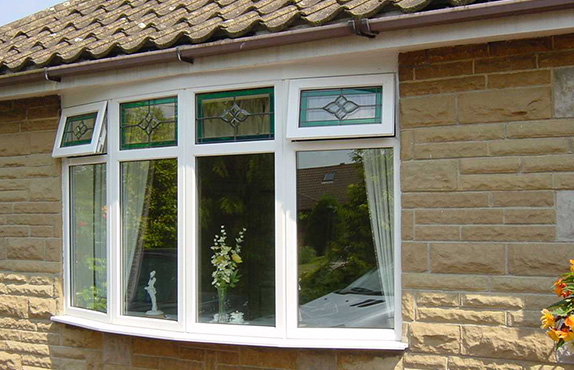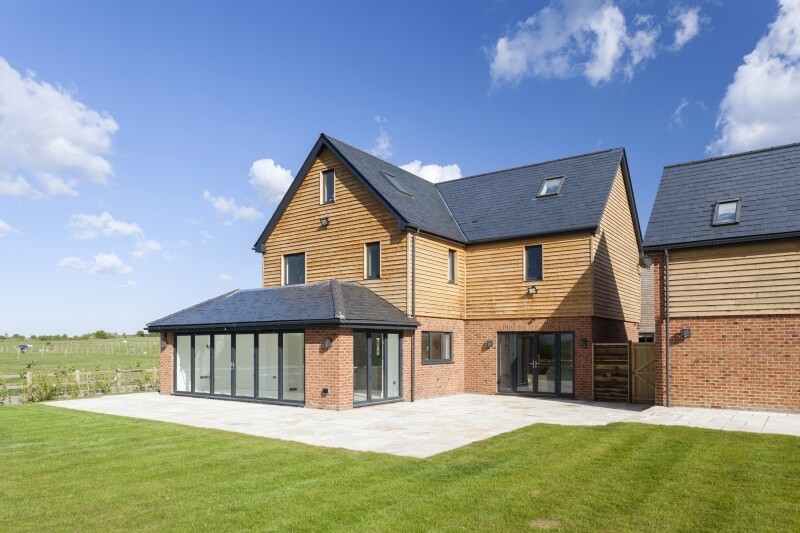Windows have come a long way since the first reports of glazed panes during the Roman Empire in around 100 AD.
Nowadays, as well as providing views of the outdoors, they are a great way to add security, energy efficiency, and kerb appeal to your home.
The window material best adapted to meet the requirements of the modern world is uPVC, evidenced by its standing as the UK’s most popular form of window.
This blog will explore what uPVC is, its history, benefits, and the options available to homeowners for installation.
What is uPVC?
uPVC stands for unplasticised polyvinyl chloride, a strong and rigid form of plastic known for its durability and weather resistance.
As well as windows, uPVC is commonly used for doors, cladding, guttering, fascias, and conservatories.
It has become a popular choice for a variety of reasons, which include its durability and energy efficiency.

What is the history of uPVC?
The rise of uPVC coincided with the increased use of double glazing across the United Kingdom in the 1970s.
Aluminium frames were utilised for the first double-glazed units, though there were frustrations over condensation and poor insulation, with the material not being at the same level it is today.
This created a need for a superior option – enter uPVC.
From there they surged in popularity and dominated the 1990s and early 2000s, though were often criticised for a lack of colour options, a concern that was addressed in the 2010s – with advances in manufacturing leading to a far wider colour palette, with some even mimicking woodgrain finishes.
What are the benefits of modern uPVC windows?
This takes us to 2024, where uPVC is Britain’s most common window material thanks to its ability to adapt to the demands of the modern world.
Its benefits are described below.

Energy Efficiency
Modern uPVC windows boast exceptional thermal efficiency, largely thanks to their high number of internal chambers and a spacer bar to insulate and retain heat.
Simply put, the way a uPVC window frame is constructed successfully keeps the warm air inside your home when it’s required in the colder winter months, but also stops the heat from entering when it’s unwelcome on hotter days.
This can save you money in the long run, as you’ll be far less reliant on expensive appliances including radiators, electric heaters, fans, and cooling systems – as well as reducing draughts.
In 2024, thermal insulation is a vital consideration for homeowners, which is a key reason behind uPVC maintaining its standing as the UK’s most popular window material.
Affordability
As well as saving money on energy costs, you’ll also have to pay less initially to install new uPVC windows than you would for timber or aluminium.
Though this isn’t due to uPVC being an inferior choice, far from it.
It’s cheaper largely because it’s readily available and manufactured using well-established techniques such as extrusion – this leads to uPVC being a product with high supply, meaning fabricators and installers can charge competitive prices for it.
On the other hand, timber (or wooden windows) requires more labour-intensive construction and manual crafting, adding to its total cost.
Versatility
Modern uPVC windows are also highly customisable and can be installed in a huge range of styles. Popular options include the recognisable casement window, flush sash, and bay & bow.
They are the most versatile material when it comes to colour too, as you can opt for minimalist finishes like Black, Cream, and Anthracite Grey, or a more standout option such as Chartwell Green or Rosewood.
The Rosewood colour is a great case study for the evolution of uPVC. In years gone by homeowners more commonly preferred timber windows over uPVC due to its woodgrain aesthetic.
However, thanks to technological advances, woodgrain effects are now able to be foiled onto uPVC window frames, giving you all the modern perks with a traditional appearance, should you prefer.

Security
uPVC is a strong, rigid material.
Especially compared with timber, it’s difficult to break into, giving you peace of mind that your windows are secure.
At Windows & Doors 2 You, our uPVC casement windows are fitted with high-security shoot bolt locks as standard, adding an extra layer of protection.
Low Maintenance
Once installed, uPVC window frames require less care and cleaning than other materials.
To get them to look as good as new, all you usually need to do is give the frames a quick wipe with a damp cloth.
They’re also far less likely to get damaged, fade over time, or rot, as they are excellent resisters of the wind, rain, and sun.

What options are available to homeowners?
Casement Windows
A popular style, casement windows are hinged and can be opened by cracking a handle or pushing a lever. The hinge is most commonly found on the side of the window, but can also be found on the top or bottom of the frame.

Bay & Bow Windows
Bay & bow windows are an effective way to add additional space to your living area. They protrude outwards from your wall in an angular or curved shape, offering excellent views in the process.

Flush Sash Window
Flush sash windows are designed to replicate the features of a traditional timber window, but with the modern benefits mentioned above that come with using uPVC.

Who are Windows & Doors 2 You?
At Windows & Doors 2 You, we’ve provided high quality home improvement products for our local Birmingham, Staffordshire, Shropshire, and wider West Midlands communities for years.
As well as modern uPVC windows in double glazing and triple glazing, we also offer exceptional doors, such as French doors and sliding doors, along with roof lanterns and a wide range of aluminium products.
We offer free no-obligation online quotes here, and a member of our friendly customer service team will always be on hand to answer any questions you may have on 01952 474898, or via email at info@windowsanddoors2you.co.uk.
Alternatively, we’re always delighted to welcome guests to our Telford showroom, which can be found at Unit 27 Hortonwood 33, Hortonwood, TF1 7EX.


